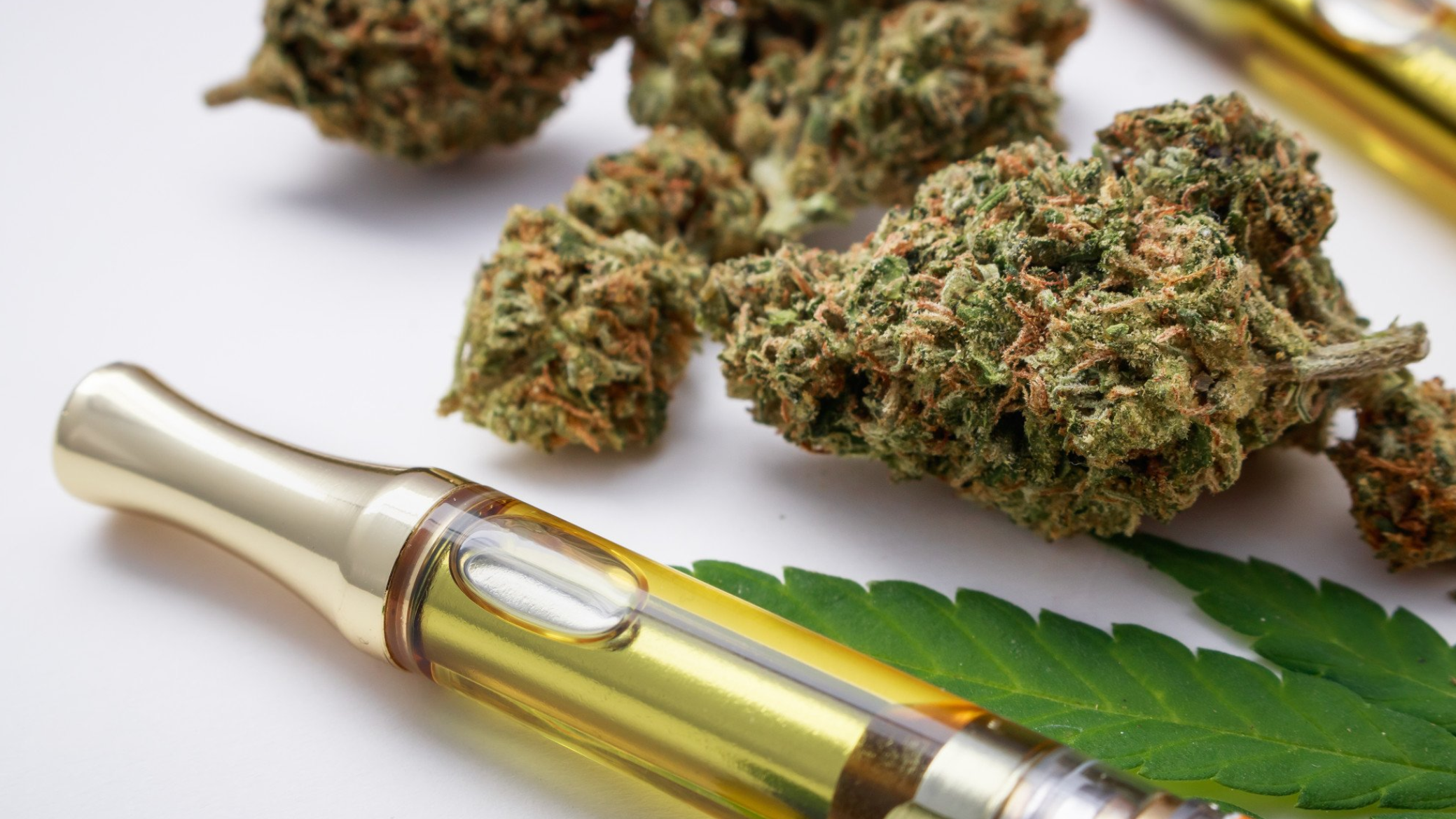How Long Do Gummy Edibles Last? Comprehensive Guide
Cannabis gummies combine convenience, portability and discretion with the long‑lasting effects of orally ingested cannabis. Because they’re food products, they have two different “lifetimes” that matter to consumers: how long the high lasts and how long the product stays fresh.
This guide synthesises recent research and the information provided by competitors to help readers understand onset times, duration of effects, shelf life, optimal storage and how to recover from over‑consumption.
What makes gummies different?
Cannabis edibles deliver cannabinoids through the digestive tract rather than the lungs. Because the body must digest the product before absorbing cannabinoids, onset is much slower than with inhalation. Edibles also undergo first‑pass metabolism in the liver where THC is converted to 11‑hydroxy‑THC, a metabolite that crosses the blood–brain barrier easily and is more potent than THC. This metabolic pathway explains why edible highs feel stronger and last longer than smoked or vaped cannabis.
Gummies are chewable edibles. Unlike lozenges or lollipops, which are absorbed through oral mucous membranes and act quickly, gummies are swallowed and must be digested. Thus their onset times and durations are similar to cookies or brownies.
How long do edibles take to kick in?
The onset time of a gummy depends on its formulation and individual factors such as metabolism, body weight, sex, diet and tolerance. Research summarised by Healthline reports that THC edibles usually begin to take effect 30–60 minutes after consumption. Hard candies absorbed sublingually may take effect in 15–45 minutes, whereas chewable edibles like gummies can take 60–180 minutes. Eating on an empty stomach or having a faster metabolism can shorten the onset, whereas consuming edibles with a meal can slow it down.
How long do gummy edibles last?
Duration of psychoactive effects
The high from gummies lasts much longer than from smoking or vaping because digestion and first‑pass metabolism slow the release of cannabinoids. Multiple sources agree that a typical edible high lasts 6–8 hours. Peak blood levels of THC and 11‑hydroxy‑THC occur about three hours after ingestion, which explains why many users feel the strongest effects several hours after eating a gummy. Individual tolerance strongly influences duration: low‑tolerance users may feel effects for 8–12 hours, while high‑tolerance users may only experience 4 hours.
Dose matters. A “standard” edible serving often contains 10 mg of THC, but beginners are advised to start with 2.5–5 mg. The Colorado Department of Revenue equates the behavioural effects of eating 1 mg of THC to smoking 5.71 mg. Even regular smokers should start low and increase slowly because edible THC produces a more intense and longer‑lasting effect. Doses above 20 mg are associated with increased risk of unpleasant side effects such as cognitive impairment, agitation, nausea and hallucinations.
Duration of detection in the body
THC metabolites remain in the body after the effects have worn off. Studies suggest that metabolites are detectable in urine for several days to a week in occasional users and a month or more in regular users. Hair tests may detect THC metabolites for up to three months. Virginia marijuana laws also note similar testing windows for THC. Delta‑8 and delta‑9 THC produce the same metabolite (THC‑COOH), so both will trigger positive drug tests.
How long do gummy edibles last on the shelf?
Gummies are food. Like their non‑medicated counterparts, they eventually spoil. Competitor sources emphasise that THC degrades when exposed to heat, light and air; over time it converts to cannabinol (CBN), which is less psychoactive and more sedating. Because gummies are mostly sugar, gelatin and water, they are less perishable than baked goods and can last six months to a year in their unopened, airtight packaging. Individually wrapped gummies and candies often have an indefinite shelf life, although texture may change and mold can still develop.
Once opened, gummies are exposed to oxygen and microbes. Green Health Docs warns that opened packages degrade more quickly and that touching gummies with your hands introduces bacteria. To maximise shelf life after opening:
Store in an airtight container to minimise oxygen exposure.
Keep them cool and away from sunlight; heat and light accelerate THC degradation and support mold growth.
Avoid moisture; high humidity encourages microbial growth.
Label and date your container so you know when they were opened.
Under these conditions, opened gummies can stay fresh for several months. For long‑term storage, freezing is recommended. Freezing can preserve cookies and brownies for up to three months without noticeable loss of potency; the same applies to gummies if they are tightly sealed. Freezing protects cannabinoids from heat and light and slows oxidation.
Expiration signs
Signs that your gummies have expired include hard or sticky texture, off or stale flavours, unusual odours and visible mold. Expired gummies are unlikely to be harmful but they may deliver little or no psychoactive effect. Safety is more of a concern with baked edibles such as cookies or brownies, which spoil within days because they contain milk, eggs and other perishable ingredients.
10 mg edible: how long does it last?
A 10 mg THC gummy is a common serving size. For most adults with some cannabis tolerance, a 10 mg edible produces effects for 6–8 hours. Novice users may experience a longer high because they metabolise THC more slowly and have lower tolerance; the effects can last up to 8–12 hours. For people with high tolerance who regularly consume cannabis, the same 10 mg dose might wear off in about 4 hours. The intensity of the high peaks around three hours after ingestion.
You can learn more about medical marijuana card certification and proper dosing guidelines for safe consumption. The table below summarises how dose influences duration. These ranges reflect averages from research but individual experiences vary.
| Dose of THC per gummy | Typical duration of effects | Notes |
|---|---|---|
| 2.5 mg (microdose) | 2–4 hours | Suitable for beginners; start low and wait at least 2 hours before taking more. |
| 5 mg (low dose) | 4–6 hours | Mild euphoria and relaxation; recommended first‑time dose. |
| 10 mg (standard dose) | 6–8 hours | Peak effects around 3 hours; may feel stronger than expected if tolerance is low. |
| 15 mg | 7–10 hours | Moderate to strong effects; not recommended for inexperienced users. |
| ≥20 mg (high dose) | 8–12 hours or longer | Increased risk of anxiety, paranoia, hallucinations and other adverse effects. Only for experienced users. |
Dosing best practices
Read the label carefully. Packages should state the THC and CBD content per serving. Mislabeling is common; a 2015 study found only 17 % of tested edible products were accurately labelled.
Start low and go slow. Even experienced smokers should begin with small doses because edible THC is more potent.
Wait before re‑dosing. Unlike smoking, edibles don’t produce immediate feedback. Healthline and Medical News Today both recommend waiting at least two to three hours—and some experts advise a full day—before taking more.
Consider CBD. Gummies containing only CBD do not cause a high and have fewer side effects, although large doses may cause fatigue or diarrhea.
For condition‑specific dosage guidance, check qualifying medical conditions and consult a medical marijuana doctor in Virginia.
Side effects and safety considerations
Edibles are relatively safe, but overconsumption can cause unpleasant effects. Reported side effects include cognitive and motor impairment, extreme sedation, agitation, anxiety, rapid heart rate, nausea, vomiting, hallucinations, delusions and psychosis. Because gummies taste like candy, it is easy to eat too many. Older research cited by Medical News Today notes that overconsumption is more likely with edibles because the body provides no immediate feedback. Anyone experiencing panic attacks, chest pain or difficulty breathing after consuming edibles should seek medical attention.
Edibles also interact with medications and may be mislabelled. Healthline advises purchasing products from reputable manufacturers who provide lab testing and answer questions transparently.
How to recover from edibles
Taking too much can lead to a weed hangover—a state of grogginess, brain fog, dry eyes, headaches or mild nausea the next day. Competitor and health resources suggest the following strategies:
Immediate remedies
Stay calm and find a comfortable space. Anxiety worsens discomfort. NuggMD recommends staying in a quiet environment and relaxing.
Hydrate. Drinking water helps flush THC metabolites and eases dry mouth and eyes. Healthline advises staying hydrated before, during and after cannabis use.
Light snacks. Eating non‑infused snacks stabilises blood sugar and can reduce nausea. Avoid caffeine or alcohol, which can increase anxiety and dehydration.
Fresh air and gentle movement. Taking a walk, stretching or doing yoga increases oxygen delivery and improves clarity. This can help clear brain fog and speed recovery.
Rest and distract yourself. Try to sleep; watching a relaxing film or listening to music can divert attention.
CBD or ginger. Some anecdotal reports suggest that cannabidiol (CBD) may counteract certain THC effects. Ginger tea can soothe nausea.
Over‑the‑counter pain relief. For persistent headaches, ibuprofen or acetaminophen may help.
Long‑term strategies
Understand your personal limits. Keep a log of your dose and how you feel so you can adjust accordingly.
Start with low doses and avoid empty stomachs. Eating edibles after a meal slows absorption and reduces the risk of overconsumption.
Take breaks and avoid daily use. Regular consumption builds tolerance and may lead to withdrawal symptoms when you stop.
Seek professional help if needed. Chronic overuse can impair cognitive development and mental health, especially in teens. Addiction specialists can provide support and treatment.
For patients new to cannabis, it’s helpful to understand Virginia medical card requirements and nearby dispensary locations for safe product access.
Conclusion: Enjoy Gummies Responsibly
Gummy edibles offer a delicious and discreet way to consume cannabis, but they require patience and mindfulness. Their effects start slowly—often taking one to three hours to appear—and can last six to twelve hours depending on dose, tolerance and metabolism. A 10 mg gummy will keep most people high for most of the day, so plan accordingly. Always start with a low dose, read the packaging, and wait before re‑dosing.
As food products, gummies also have a shelf life. Unopened packages stored in a cool, dark, airtight environment can last six months to a year. Once opened, gummies are exposed to oxygen and microbes; keep them sealed and away from heat to preserve freshness. Check for changes in texture, smell or appearance, and discard anything that looks off.
If you accidentally overdo it, stay calm—discomfort is temporary. Hydration, gentle movement, healthy food and rest will help you recover. And remember: responsible consumption and proper storage ensure that your gummy edibles provide a safe, consistent experience every time.
Ready to Get Your Virginia Medical Marijuana Card?
Take control of your wellness today. Speak with a certified medical marijuana doctor and get legal access to cannabis in just a few clicks.
Start Medical Marijuana Card Certification
Explore all medical marijuana requirements from CannabisMD TeleMed and stay compliant across Virginia.








